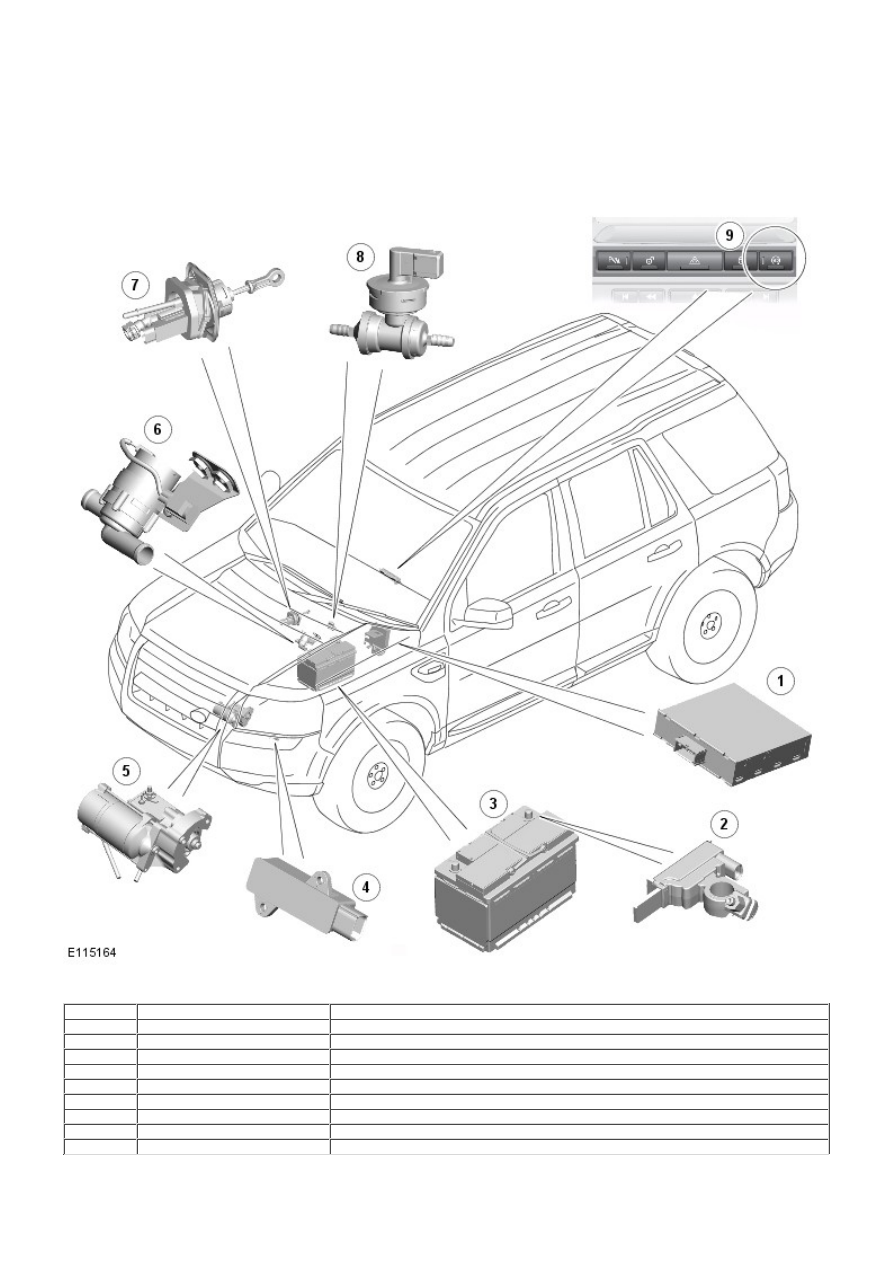Frelander 2. Manual - part 275

Starting System - TD4 2.2L Diesel, Vehicles Built From: 01-03-2009 -
Starting System
Description and Operation
STOP/START SYSTEM
COMPONENT LOCATION
Stop/Start system component location
Item
Part Number
Description
1
-
Voltage quality module
2
-
Battery monitoring system module
3
-
Absorption glass mat battery
4
-
Gear neutral sensor
5
-
Starter motor
6
-
Auxiliary coolant pump
7
-
Linear clutch sensor
8
-
Brake vacuum sensor
9
-
Stop/Start switch
OVERVIEW